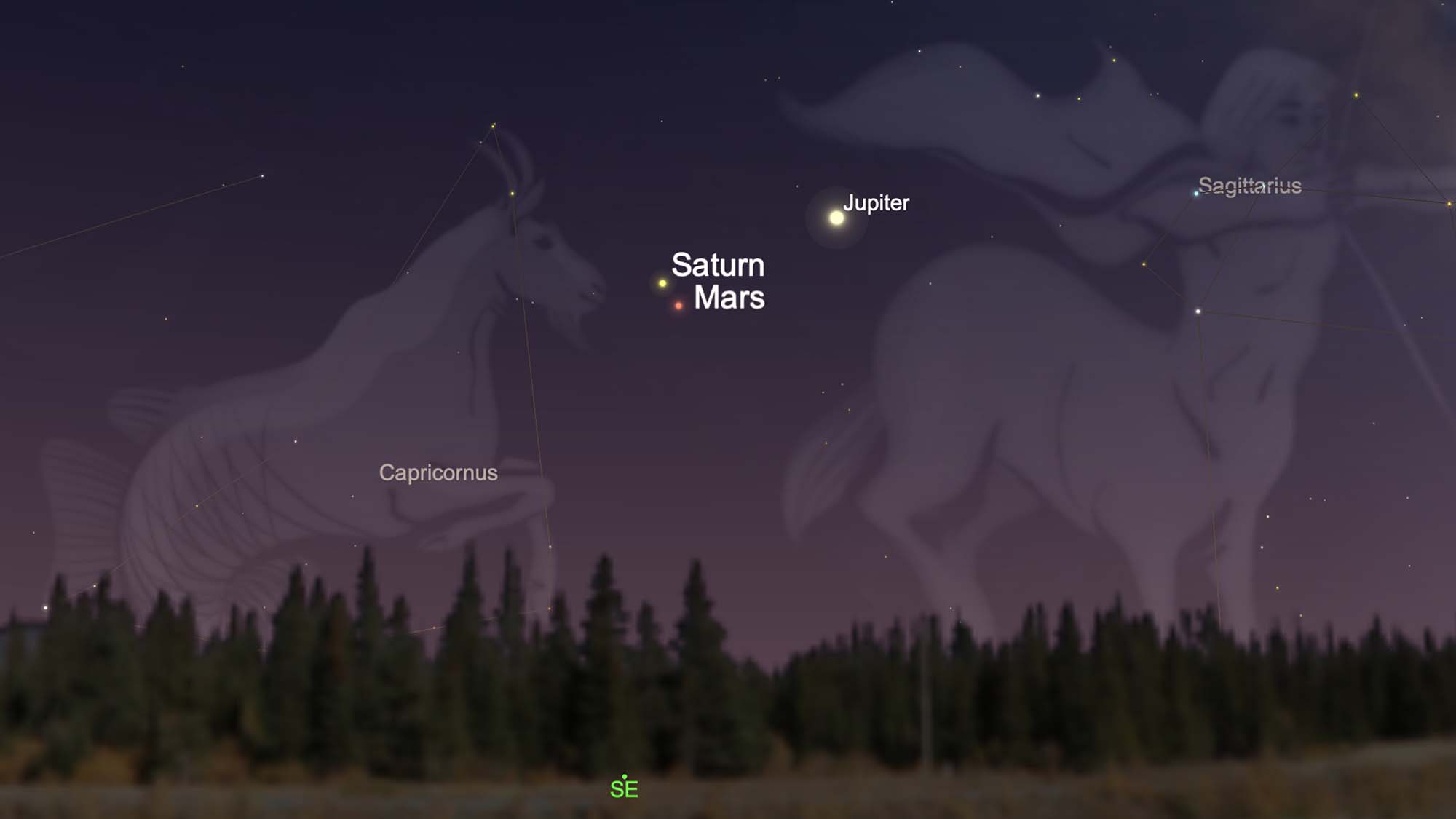See Mars and Saturn tango in the predawn sky Tuesday. Here's where to look.
The bright planets Mars and Saturn will shine together in the predawn sky on Tuesday (March 31). You can catch them above the southeast horizon before sunrise.
Saturn will be in conjunction with the Red Planet, meaning the two objects will share the same celestial longitude, on Tuesday at 6:56 a.m. EDT (1056 GMT), according to the skywatching site In-The-Sky.org. A few hours later, the two planets will make their closest approach, passing within one degree of each other at 1:25 p.m. EDT (1725 GMT).
For skywatchers in the United States, Saturn and Mars won't be visible at the moment of conjunction or during the closest approach, because daylight will obstruct the view. However, those who look up at the sky before sunrise will still be able to see the two tight-knit planets put on a show in the morning sky.
Related: When, where and how to see the planets in the 2020 night sky
In New York City, for example, Saturn will rise at 3:40 a.m. local time, followed by Mars just four minutes later. The sun will rise in New York City at 6:40 a.m. local time, so skywatchers have up to three hours to enjoy the views of Mars and Saturn. To find out exactly when the planets rise and set from your location, check out this night sky calculator from Time and Date.
Also visible nearby will be the giant planet Jupiter, which rises about half an hour before Saturn. Jupiter will be in the constellation of Sagittarius, the archer, which Mars and Saturn will be in Capricornus, the sea goat.
Jupiter, notably the brightest of the three visible planets, will be shining at a magnitude of -2.0, making it brighter than any star in the sky. (Magnitude is a measurement of brightness used by astronomers, with lower numbers denoting brighter objects. Negative numbers denote exceptionally bright objects.)
Breaking space news, the latest updates on rocket launches, skywatching events and more!
Saturn will be at magnitude 0.4, or about as bright as the star Vega. Mars, the dimmest of the three planets, will be shining at magnitude 0.8, comparable to the star Aldebaran.
Editor's note: If you have an amazing skywatching photo you'd like to share for a possible story or image gallery, you can send images and comments in to spacephotos@futurenet.com.
- See the Spring Diamond shine in the night sky
- Gemini, the 'heavenly twins' grace the evening sky this spring
- Space calendar 2020: Rocket launches, sky events, missions & more!
Email Hanneke Weitering at hweitering@space.com or follow her @hannekescience. Follow us on Twitter @Spacedotcom and on Facebook.
OFFER: Save at least 56% with our latest magazine deal!
All About Space magazine takes you on an awe-inspiring journey through our solar system and beyond, from the amazing technology and spacecraft that enables humanity to venture into orbit, to the complexities of space science.

Hanneke Weitering is a multimedia journalist in the Pacific Northwest reporting on the future of aviation at FutureFlight.aero and Aviation International News and was previously the Editor for Spaceflight and Astronomy news here at Space.com. As an editor with over 10 years of experience in science journalism she has previously written for Scholastic Classroom Magazines, MedPage Today and The Joint Institute for Computational Sciences at Oak Ridge National Laboratory. After studying physics at the University of Tennessee in her hometown of Knoxville, she earned her graduate degree in Science, Health and Environmental Reporting (SHERP) from New York University. Hanneke joined the Space.com team in 2016 as a staff writer and producer, covering topics including spaceflight and astronomy. She currently lives in Seattle, home of the Space Needle, with her cat and two snakes. In her spare time, Hanneke enjoys exploring the Rocky Mountains, basking in nature and looking for dark skies to gaze at the cosmos.


